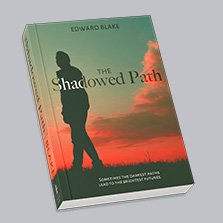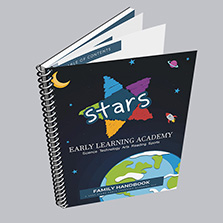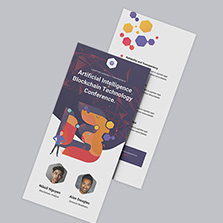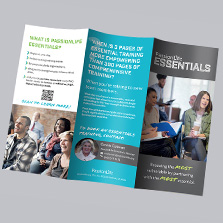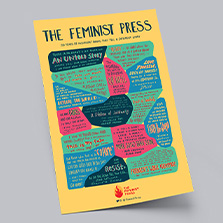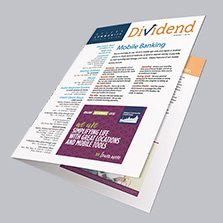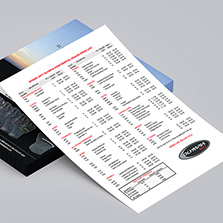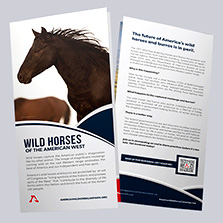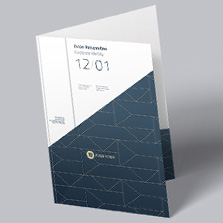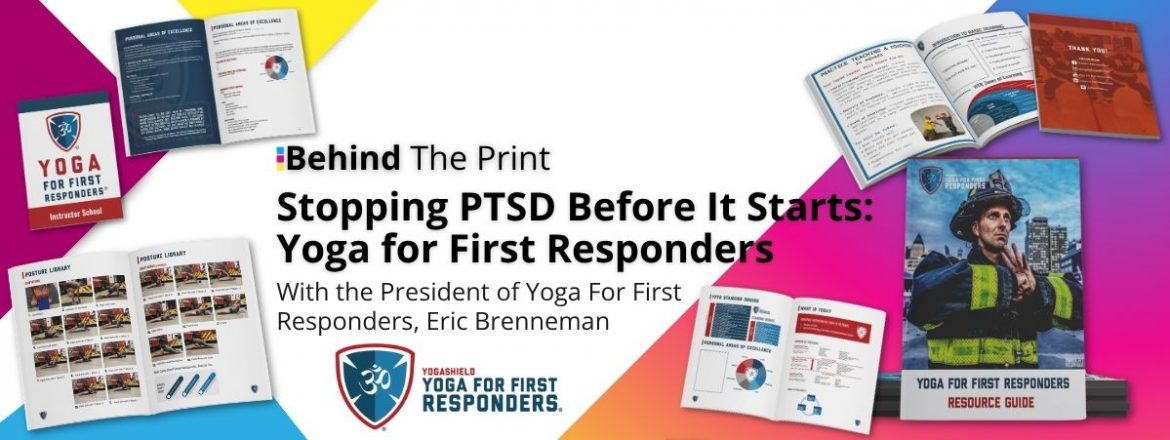
Behind The Print: Stopping PTSD Before It Starts
Welcome to the latest episode of Behind The Print, where we bring you the creative stories of industry leaders shaping the world of professional printing. In this episode of Behind The Print, we’re joined by Eric Brenneman, President of Yoga for First Responders. With a passion for service and mental strength, Eric shares how his team uses neuroscience-based yoga to build resilience, prevent burnout, and support first responders on and off the job. From training academies to department-wide programs, his approach shows how thoughtful practices and clear communication can save lives and sustain careers. If you care about wellness, leadership, or the people who serve our communities, this episode is for you.
Below, you’ll find the transcript of our conversation, edited for clarity to ensure easy reading. If you want the full, authentic experience, make sure to check out the video attached below.
20-minute read
“We are not asking anyone to change who they are. We are just asking them to add tools to their toolbox.” Eric Brenneman, President of Yoga for First Responders
Transcripts from Behind The Print with Eric Brenneman, President of Yoga for First Responders
Welcome back to Behind The Print podcast, where we feature industry leaders and uncover the creative minds behind businesses in the professional printing world. Our mission is to provide you with inspiring, actionable resources to elevate your business projects and accelerate your journey to excellence in profit and print.
Today’s episode is Stopping PTSD Before It Starts: Yoga for First Responders and I’m joined today by the president of Yoga for First Responders. We have Eric Brenneman!
Eric Brenneman: Hi, how are you today?
Zoe Fisher: I’m doing great. How are you?
Eric Brenneman: Fantastic. I’m excited to be here. Truly grateful.
Zoe Fisher: Oh, well, we’re so excited to have you and just explore a little bit more about what your business does and about how they use print. So, who do you guys serve at yoga for first responders, and what roles or communities are you most focused on supporting?
”I think that idea of being mentally, emotionally, and physically ready is what makes the job sustainable long-term.” Eric Brenneman, President of Yoga for First Responders
Eric Brenneman: Great question. As the name suggests, we support first responders. We wanted people to immediately understand what we do, so we kept it simple and clear.
We define first responders broadly. Most people think of law enforcement or firefighters, but it’s much more than that. I’m a former firefighter, and to us, first responders include everyone involved in the 911 chain during an emergency like CPR. That means dispatchers, who are often overlooked even though they have one of the hardest jobs. Then there’s law enforcement, fire services, EMS with their paramedics and EMTs, and emergency department staff like nurses and doctors.
We also work with active-duty military personnel across the country. We believe they are among the nation’s first responders too, standing on the front lines in their own way. We work nationwide. A few weeks ago I was in Medford, Oregon with the sheriff’s office, then came home for the weekend before flying out to Miami-Dade Fire Rescue for a presentation. We’re active across the entire country and it’s a really special organization to be part of.
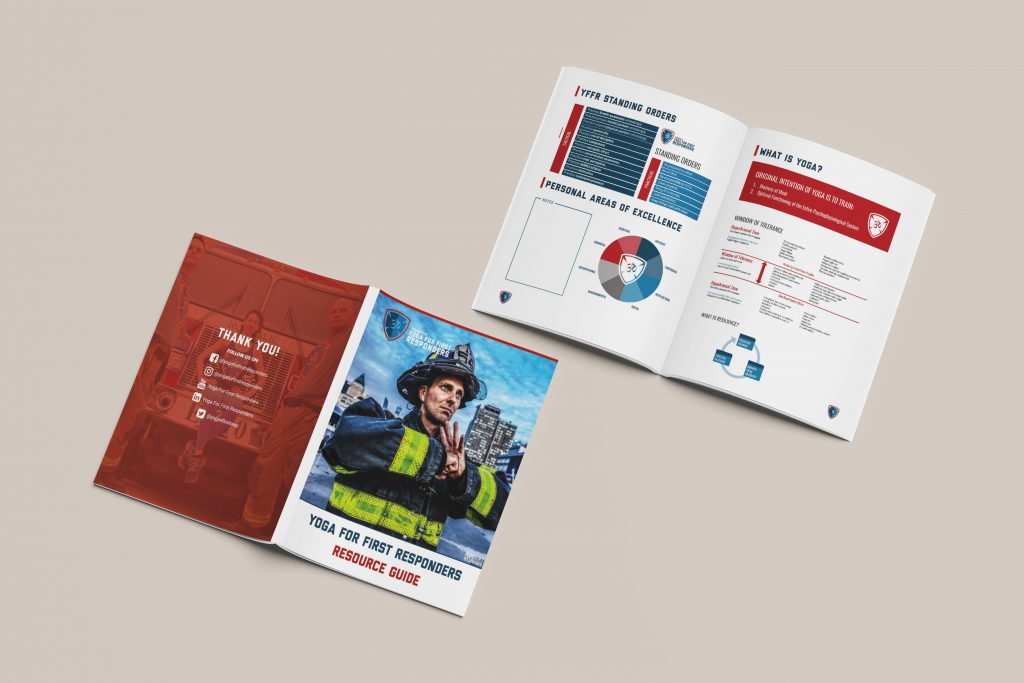
Zoe Fisher: Yeah, it sounds like you’re really busy getting that mission out there, but you’re addressing a unique and critical need that is just amazing.
Eric Brenneman: One of the lesser-known realities about public safety is how little people understand the mental health toll. Everyone hears when a firefighter or police officer dies in the line of duty. But what often gets missed is how many are lost to mental health struggles.
The military has done a better job of raising awareness. When people talk about veteran mental health, most can reference the number 22; a statistic saying 22 veterans a day die by suicide. That number is debated, and many believe the real figure is even higher.
In public safety, the crisis is just as severe, driven by many of the same factors. These are people who see trauma, death, and destruction every single day. And the stats show that first responders are three to four times more likely to die by suicide than in the line of duty. We’re losing so many first responders every day to mental health challenges. It’s not being talked about enough, and it needs urgent attention.
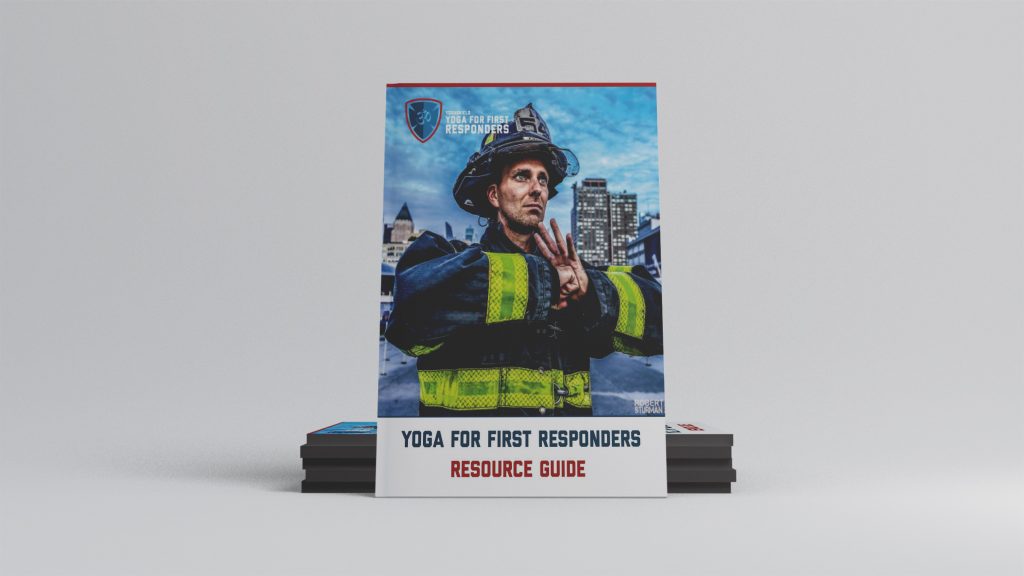
Zoe Fisher: Right, it’s really an invisible issue. So how does your approach, which is rooted in traditional yoga but specifically adapted for first responders, help address these challenges? Can you walk us through what that looks like in practice?
Eric Brenneman: When you say “yoga” around first responders, the first reaction is usually eye-rolling. People think they’re not flexible enough or don’t have the right body. That’s because yoga is often marketed to a very specific demographic which are typically women with disposable income who want to look good in yoga gear. Which is great but that image makes a lot of first responders feel like yoga isn’t for them.
What we do is bring yoga back to its traditional roots. Our founder, Olivia Mead, did her 500-hour certification in Rishikesh, India. We honor that lineage while adapting it for our audience. We teach traditional Hatha yoga that is job-specific, culturally informed, and trauma informed.
For example, we don’t use Sanskrit terms like “namaste” or “shavasana.” We don’t play music in class either, because certain songs can be triggering based on past experiences in the field. We also avoid essential oils, since even something like lavender can become a trauma trigger.
Our protocol starts with breathwork. Research shows breathing impacts both our thoughts and our physiology. We teach first responders how to regulate their breathing during high-stress moments, so they can stay calm, think clearly, and perform better on the job.
Zoe Fisher: Exactly! That is understandable.
“If we can build those tools ahead of time, that’s the preventive aspect of it. That’s the resilience training. That’s yoga for first responders.” Eric Brenneman, President of Yoga for First Responders
Eric Brenneman: We use physical drills, which is what most people picture when they think of yoga. But the way we teach them has specific benefits. One of the hardest positions I ever teach is simply standing still and breathing. That’s it. Because when you’re still, your mind tends to wander. The body reflects what’s going on mentally. If the mind is busy, the body fidgets. So we train stillness as a foundational practice.
We do use physical drills to intentionally induce stress. Then we teach responders to layer in the breathwork we started with. This helps their body default to diaphragmatic breathing during real-world stress, improving performance and decision-making.
The last part of our protocol is what we call a neurological reset. In a typical yoga class, you’d just lie down for a few minutes. But if we told a first responder to do that, their mind would race. Instead, we guide them through single-point focus meditation. It’s not about shutting the mind off, but about learning to focus on one thing. This is a proven way to interrupt triggers and reduce post-traumatic stress.
Here’s our secret sauce. We’ve worked with licensed psychologists and clinical social workers from the beginning. We incorporate elements of cognitive behavioral therapy into our yoga. We know both breath and thoughts influence physiology. When someone is in a stress-induced state, their body naturally responds as if there’s a threat. That’s survival mode and it’s connected to post-traumatic stress.
But if we can help them reframe that moment as a challenge instead of a threat, it changes their biology. Research shows this shift increases DHEA, a neurosteroid linked to resilience and post-traumatic growth.
So we teach them to reframe stress, breathe through it, and regain control of their nervous system. That’s why we call it a preventative tool. This exact protocol has been studied, published in the American Psychology Journal, and is now listed as a preventative tool for post-traumatic stress in first responders.
Zoe Fisher: Wow! I love how you use CBT in yoga.
Eric Brenneman: So cool. And this is why I’m so honored to share this. We need to get the word out. There’s a practical and tactical application here that people can start using today. I can teach some of it right now in this episode.
If someone puts it into practice, changing their breath, changing their mindset, they are already moving toward post-traumatic growth. It is supported by research. It is real, and it is powerful.
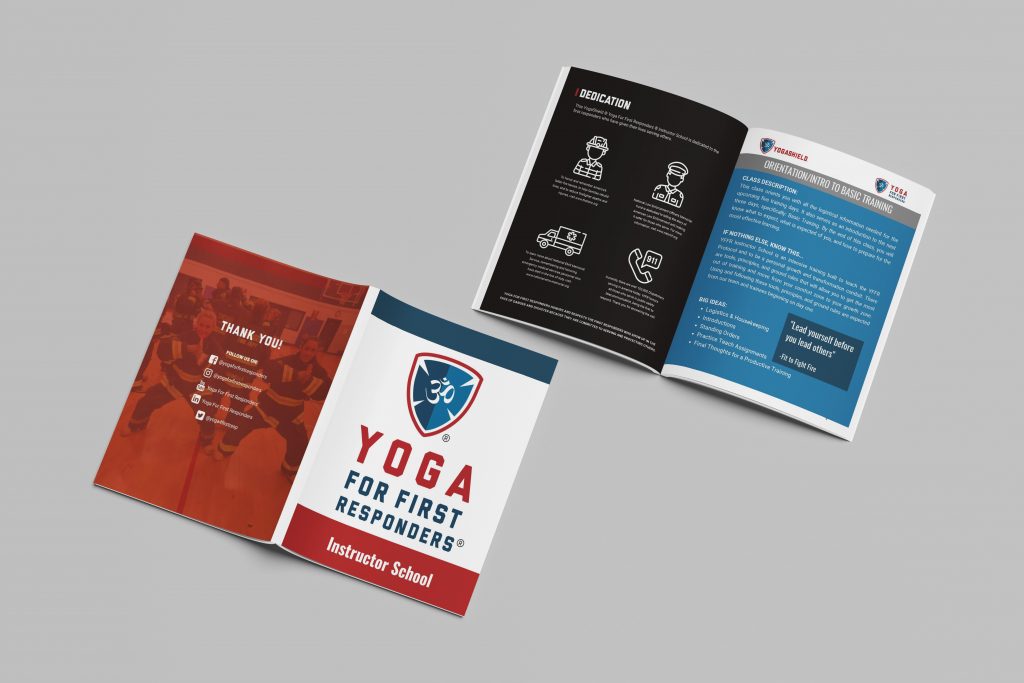
Zoe Fisher: That is so interesting, and I love how you’ve really tailored this to first responders. My parents are in the military, so I understand where that mindset comes from when they hear the word yoga or similar things.
The way you adapt the language and approach to meet them where they are really sets your work apart from other preventative programs and even long-term therapy options.
I’m curious, are there any other wellness programs out there doing something like this?
Eric Brenneman: There are a couple of other programs out there, and honestly, most of them went through our Train the Trainer program. So in a way, we helped build some of our competitors. That is just how it goes. It is business at the end of the day.
I would love to be the only option out there, but I know that is not realistic. Just like you are not the only print shop in the world, we all have to find ways to stand out and show what makes us different.
What I will say is that we have a lot of experience. We just crossed the milestone of working with our one hundred thousandth public safety professional. We have been doing this for ten years, and people are buying in because of everything you mentioned. It is specific, it is practical, and it works.
Zoe Fisher: It’s a no brainer! That is so interesting, and I love how you’ve really catered to this industry, specifically for first responders. I have parents in the military, so I understand the mindset they have when they hear the word yoga or similar concepts. The way you adjust the language to meet them where they are and use terms that feel familiar instead of intimidating really sets you apart from other preventative approaches or even long-term therapy options. It makes a huge difference. So I’m curious, are there any other wellness programs out there that are doing something similar?
Eric Brenneman: There are a couple of other programs out there, and honestly, most of them went through our Train the Trainer program. So in a way, we ended up building some of our own competitors, which is kind of funny, but it’s okay. At the end of the day, it’s still business. Of course, I’d love to be the only one doing this, but I know that’s not realistic. Just like you’re not the only print shop out there, we have to differentiate ourselves, show why what we do is unique and how we do it differently. What I will say is that we’ve got a lot of experience. We just crossed the milestone of working with our 100,000th public safety professional. Over the past ten years, we’ve reached first responders all across the country, and people are really buying into it because of everything you mentioned, it’s relevant, it’s respectful, and it works.
”My biggest takeaway is that we don’t need to reinvent the wheel, but we do need to adapt the tools we already have to serve the people who serve us.” Eric Brenneman, President of Yoga for First Responders
Eric Brenneman: We are the mandated training provider for agencies like the US Marshals, Secret Service Uniform Division, Capitol Police, and Chicago PD. Before 2020, most of our work was with fire service. After 2020, public demand for better policing shifted our focus—now 80 percent of our partners are law enforcement.
As a former firefighter, I am proud to be part of that change. We are helping these departments improve from the inside out by teaching nervous system regulation and mental resilience.
At our Albuquerque headquarters, we stream live classes every Tuesday and Thursday at 9:30 a.m. Mountain Time. They are free and open to anyone who wants to join.
One of our regulars, Josh, a veteran, joined six months ago. Since then, he feels better, manages his intrusive thoughts, and cut his smoking in half. He even became a certified trainer and now teaches others. That transformation is what this work is all about.
Zoe Fisher: Totally. I will definitely show them this episode, and I bet they will come to your class. I think it’s so powerful that just one or two classes a week can grow emotional intelligence over time. The impact on communities in 50 or 100 years could be incredible.
You’ve reached over 100,000 public safety professionals. Would you say that’s the organization’s biggest milestone so far?
Eric Brenneman: Oh, without a doubt. Reaching 100,000 public safety professionals is by far our biggest milestone. Not many organizations can say that, and the ripple effect is truly unquantifiable.
Let me share a story about David, a law enforcement officer in Colorado who went through our research study. He’s a stand-up guy, married with kids, and loved in his community. After the training, his wife said he became more present at home and a better partner. That alone creates a huge shift in family dynamics.
But it goes further. He responded to a call where a teenage girl was having an emotional episode and destroying the house. By state law, she had to be removed. In the past, that would have meant handcuffs and being carried out, which can leave deep trauma.
Instead, David used our training. He helped her regulate her nervous system through breathwork and mindfulness. She still had to leave, but she walked out calmly with him, no handcuffs, no force.
That changed everything for how that family sees law enforcement. That is the ripple effect. We may never fully measure it, but it is powerful.

Zoe Fisher: I completely agree. It will be interesting to see when law enforcement starts using this approach in daily calls. These are real emergencies they deal with, and I understand that certain steps have to be followed by law. But the way he handled that situation was powerful. He likely set an example for everyone involved, whether on the call or in the home. That is really inspiring. I love that.
Eric Brenneman: Yes, we are working with different states to get our training officially accredited for both fire service and law enforcement. Every state mandates health and wellness training for public safety, but a lot of it is traditional talk therapy. If we can meet those requirements while also offering practical, on-the-job tools, that is a big step. It means our program can count toward their mandated hours and still make a real impact in the field.
We are making progress, one step at a time.
Zoe Fisher: Yeah! The progress is so cool to watch I bet. Would you say that’s your biggest obstacle that you guys are facing right now?
Eric Brenneman: Our biggest obstacle, believe it or not, is the word yoga. Because of all the misconceptions people have, especially in public safety, they hear yoga and immediately think it is not for them. That is why I chose the title I did for this conversation. People see it and think, there is no way yoga can prevent PTSD. They already have an idea of what yoga is, and it is not this.
I always joke that yoga is the only four-letter word a firefighter or cop won’t say. Some people suggest we just change the name, but people are smart. If we called it something like tactical black belt training, they would sign up but then they would show up and realize it is a yoga class and feel misled. So I would rather be upfront and fight that battle at the beginning, not at the end. That is how we start changing the stigma and helping people understand what this really is.
Zoe Fisher: So Cool. I love that. That’s so interesting. So how do you guys use print?
Eric Brenneman: Seriously, Zoe, we have tried so many things and we keep coming back to print. As a small business, we have to be cost-conscious, but also focused on what works best for our students.
We started ten years ago with black and white PowerPoint slides and basic manuals. Eventually, we partnered with an instructional design expert and rebuilt everything from the ground up for adult learning. Now we have a beautifully designed 360-page instructor manual and a quick reference book for certified trainers. We tried going digital in 2023 and 2024, thinking tablets might be the way forward. But the learning experience dropped. Students were distracted and took fewer notes. It simply did not work.
So we went back to print, and we are all in. The experience is better, the results are better, and it shows. I would not be doing this conversation justice if I didn’t say, we tried digital, but print is what delivers real learning outcomes.
Zoe Fisher: It’s so interesting hearing this from the perspective of both print and marketing. You would think digital content grabs attention and keeps you focused, but in reality, our eyes and brains respond better to something physical.
The distractions you mentioned are real. I experience it too, I open my phone for one thing, five other things pop up, and I forget what I was doing in the first place. It happens all the time.
Eric Brenneman: Totally. When we go to trade shows or events, we use digital business cards for quick contact sharing, but when it comes to critical information, we go with print. None of my team carries traditional business cards, but we all use printed postcards. There’s something powerful about holding something in your hand, even if someone ends up throwing it away. For that moment, they have to engage with it. I also work for a tech company that stopped using printed collateral at events, and honestly, it has been terrible. People still want something tangible.
Our most impactful print piece is a black and white postcard. On one side is our mission statement. On the other side, six different breathing techniques with reasons why you’d use them and step-by-step instructions. It also includes our contact info and a QR code to more resources.
Police and fire chiefs take stacks of them. They put them in visors, patrol cars, ambulances, because they are visible and easy to use on the spot. That little postcard is the print item we get the most requests for. In 2025, print is still making the biggest impact for our organization.
Zoe Fisher: Wow, that’s mind-blowing. Anytime I have a printed piece with helpful tips or techniques, it really sticks with me. Knowing those officers have something right in their visor they can use at any moment is so cool. If I were in their position, I would absolutely use it, take it home, and keep thinking about it. That kind of resource can really make a difference.
Eric Brenneman: Since it’s a postcard in the car, no one has to know about it. They don’t have to feel weak or judged. Even if someone doesn’t fully buy into it, in a tough moment they might think, I’ll give this a try, and pull it out to use.
It’s private, accessible, and they can even use it in the driveway before walking inside after a hard day. It’s simple and effective.
From a cost standpoint, once we print in the thousands, the expense drops so much that we can offer it at a low price while still making it sustainable for us. Honestly, the power of a postcard says it all. There’s your new marketing slogan, Zoe.
Zoe Fisher: A postcard. I am never going to forget that. And I love that you mentioned privacy, because with algorithms now, it is hard to look something up like breathwork on YouTube without being flooded with yoga content later. That alone can reinforce the stigma people already feel. Having those tools in print, totally offline, makes it so much more accessible. It is such a smart and thoughtful part of your model.
Eric Brenneman: Yeah, it really is. It takes us back to the roots, traditional Hatha yoga and using paper-based tools. As someone who believes in technology, it might seem counterintuitive, but I truly think the pendulum is starting to swing back. People are switching to simpler phones and trying to disconnect more. In that way, we are actually ahead of the curve, leaning into something that feels more grounded and human.
Zoe Fisher: That’s so interesting, and I love how you said it goes back to the roots of your business. But really, this business is helping bring people back to their own roots.
Eric Brenneman: Yeah, I love the way you described that. We are not teaching people anything they didn’t already have in their bodies. Anyone with kids knows, infants and toddlers naturally do many of the things we teach. So really, we are just helping people remember how to be human again.

Zoe Fisher: So, if you had a day completely free to spend however you’d like, would you be with the horses?
Eric Brenneman: It’s something my wife and I talk about a lot. In both stoicism and yoga, there’s this idea of impermanence. We won’t be here forever, so we should live intentionally every day. If I had total time freedom, I’d start the day slowly, no alarm. I’d move my body more and do things like bike, exercise, and focus on creativity and teaching, which really fills me up. I love helping others grow. I’d travel more and spend more time with my family. Teaching takes me away a lot, so we make dinner a daily priority. That moment grounds us and keeps us connected.
“You can’t pour from an empty cup. And the job is already draining enough.” Eric Brenneman, President of Yoga for First Responders
Zoe Fisher: I couldn’t agree with you more Eric. Awesome. Tell me how can our listeners get in touch with you or work together?
Eric Brenneman: Yeah, totally. Our website is yogaforfirstresponders.org. You can search us online and we’ll be the first result. That’s also our handle on all social platforms like Facebook, Instagram, LinkedIn, and YouTube.
The website is the main hub for everything we do. I’ll also share my email which is eric@yogaforfirstresponders.org.
And honestly, likes and shares really help. That is what helps break the stigma around the word yoga. That is what we ask.
Zoe Fisher: Thanks so much Eric for joining us today!
That’s a wrap on another episode of Behind The Print. Thanks to our listeners for joining us as we explore the artistry and innovation of the printing world. Remember, have a strong vision, build the right strategy, and use tools like print to amplify your message and make your brand stand out.
If you enjoyed today’s episode, be sure to get your sample pack today from PrintingCenterUSA.com and share it with your fellow business enthusiasts. Until next time, keep your creative sparks flying, and remember, there’s always more to discover behind the print.
Stronger Minds, Safer Communities
Eric Brenneman is redefining what it means to serve. As President of Yoga for First Responders, he brings science-backed tools and mindful movement to those on the front lines. From firehouses to academies, his work helps build mental resilience, emotional control, and long-term wellness. With clarity, care, and purpose, Eric shows that yoga is more than a practice, it’s a lifeline. Order today!
Listen to the full episode on Spotify or Amazon Music and check out the interview on YouTube!


